
Tambour doors have been used in furniture making for hundreds of years, and like many forms and styles, their popularity has waxed and waned over time. At the moment, these clever sliding panels are experiencing a bit of a renaissance, and for good reason. They are incredibly versatile once you learn a few basic guidelines. While making tambour takes practice and skill, the techniques and rules I share here are actually much simpler than they might seem at first glance. And then there's the magic factor. Tambour doors move unlike any other kind of door, and they make a lovely sound as they disappear mysteriously into the depths of a cabinet.
While there are various methods for making tambour panels, this article tambour focuses on canvas-backed doors, their tracks, and the cabinet that houses them. For a project to build employing these techniques, see Sarah Marriage's Modern Sideboard. I hope these guidelines inspire you to experiment with your own designs and see where the tambour takes you!
Anatomy of a tambour
In its simplest form, a tambour cabinet consists of a case with two curving tracks in opposing panels with a slatted door running in them. Other optional elements of this system include false interior walls to hide the door as it opens and face boards to hide where the doors turn. The back panel is typically attached with screws so that the door can be removed if repairs are needed.
This story is from the April - May 2023 edition of Woodcraft Magazine.
Start your 7-day Magzter GOLD free trial to access thousands of curated premium stories, and 8,500+ magazines and newspapers.
Already a subscriber ? Sign In
This story is from the April - May 2023 edition of Woodcraft Magazine.
Start your 7-day Magzter GOLD free trial to access thousands of curated premium stories, and 8,500+ magazines and newspapers.
Already a subscriber? Sign In
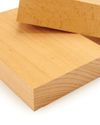
Beech
Plain looks, but a solid performer
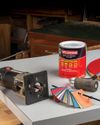
Working with PLASTIC LAMINATE
Adding a durable, smooth, and colorful surface to your work
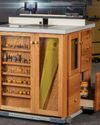
High-Tech ROUTER TABLE
A state-of-the-art shop essential

Albers-Inspired NESTING TABLES
A colorful array of Bauhaus utility

Desktop ORGANIZERS
Mini modules for your modern workspace

Joiner's MALLET
A hard-hitting shop hammer
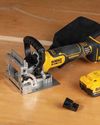
Battery-backed biscuiting
DeWalt 20V Max XR Biscuit Joiner
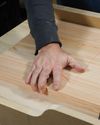
Crosscut SLED
A basic build of a crucial table saw accessory
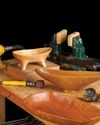
Power-carving BOWLS
Tools and techniques for sculpting

Library STEPS
Mitered box joints give rise to an updated classic